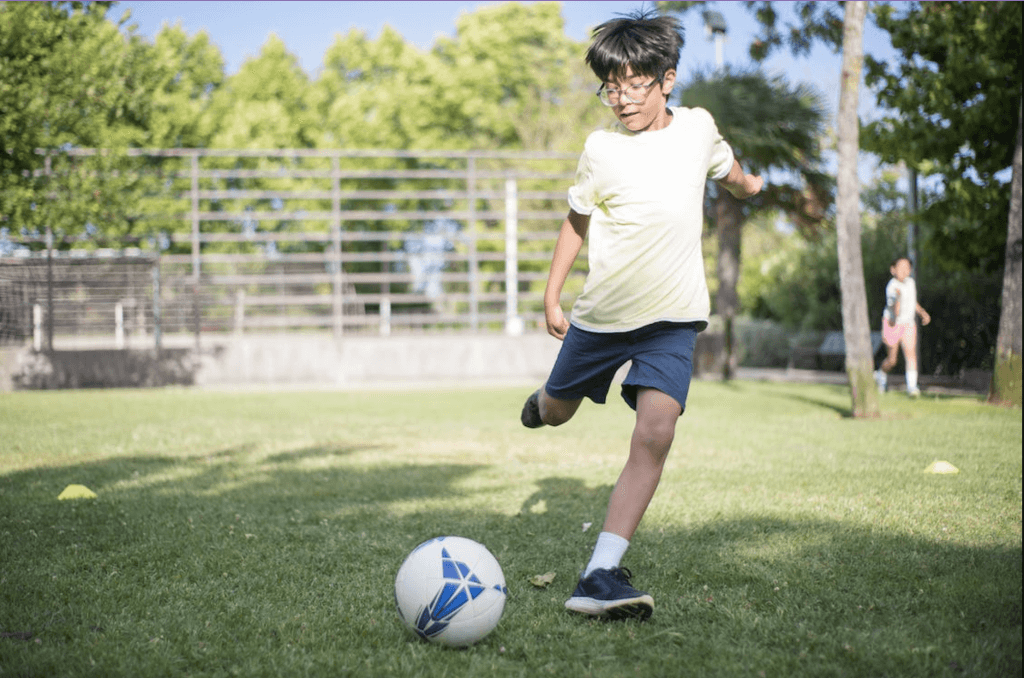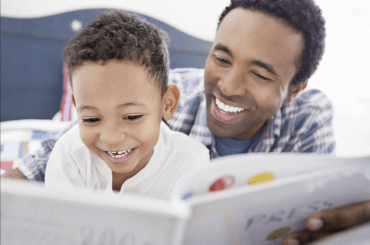Like most six year old kids my son likes to play. He likes to jump on the trampoline (especially when I join him and give him that extra strong bounce), play pirates, hide and seek, legos and more. I encourage him to do as much play as possible away from TV and devices.
He’s always been relatively strong and coordinated for his age. He picked up basic skills to throw, kick and climb with relative ease. He’s not perfect at them, but certainly quite competent for his age. That said, he’s also shown limited resilience to practice them to date. If he doesn’t get something right away, he typically gets frustrated quickly and wants to give up.
Up until recently, I just haven’t worried about this. My assumption was that his resilience would improve as his brain develops.
But recently we signed him up for his first soccer league. And it was immediately clear from his first soccer game that he’d benefit from a little practice – just to find more enjoyment in the game itself. So I’ve decided it is the time to introduce some deliberate practice.
The trick I’ve tried to figure out is how to build it in amidst his play. He still doesn’t want to practice. It’s much less fun than playing.
Here’s how I’ve been using Focusable to fit it in.
I’ll typically engage with him for a bit in what he wants to do. Maybe 15-20 minutes of it. Then I’ll lightly suggest we go practice his kicking or dribbling skills.
At first he almost always says no. But with a little bargaining and persistence, he reluctantly agrees.
I open up Focusable right then and there and start the 5 finger breathing exercise with him. This is the best breathing exercise in Focusable for young kids. It calms him down quickly, gets him past any remaining reluctance and gets him ready to pay attention to his skills.
When the exercise is done, I swipe forward to the Pulse timer. I verbally set his expectation that we’ll be practicing for 5 minutes and that’s all he has to do. Just pass, trap, head, whatever – for that duration. I make the promise that when the timer is up he can be done and we can return to doing what he wants.

Then we grab the ball and dive in as quickly as possible. I try to be 100% engaged in what we’re doing – encouraging, observing, modeling, giving him a tip here and there – but being careful not to overwhelm him. I try to give him the space to set goals for what he wants to learn within this and leverage his attention to observe his own errors and correct them. It’s likely imperfect interpretation of the Inner Game.
Sometimes it’s hard to go the full 5 minutes, honestly. He wants to give up. But I gently remind him that we haven’t heard the alarm and he needs to keep pushing. A few times we’ve gone up to 10 or 15 minutes when he starts enjoying himself.
When he starts to lose interest after the 5 minutes are up, I swipe forward and record a quick video clip of what we’re practicing, then I complete the activity. He almost always wants to watch the video immediately afterward to see how he looks practicing. More than once it’s turned into a chance for some feedback. Then we return to what he wants to do again.
Here’s an activity from a recent practice where he was learning to knee the ball.
Soon I am going to start building a Focusable group for his grandparents and others that are interested to observe and encourage his progress. This will help build some good pro-social pressure for him to practice like this.
For me it’s a perfect way to fit in some deliberate practice time around his play. I’ll be using Focusable for more of his skill development and working to increase the time he can spend on it in the coming years.
Next up I’ll use it for his reading practice at bedtime.


